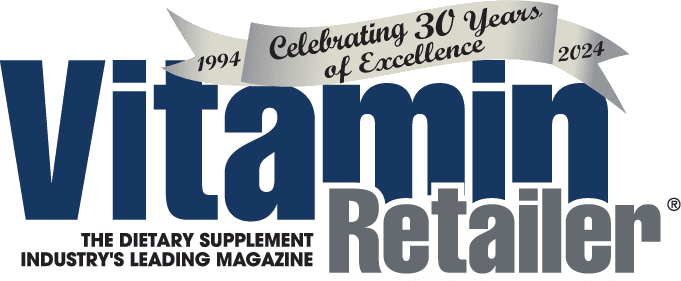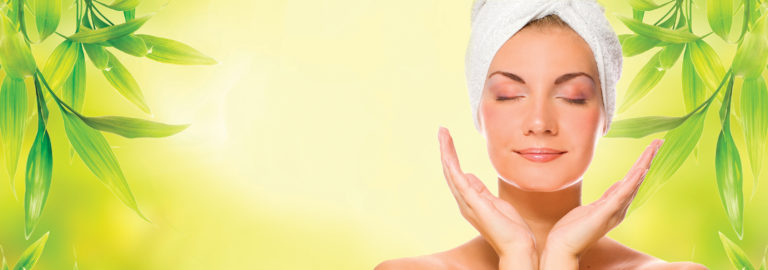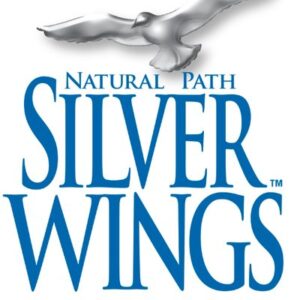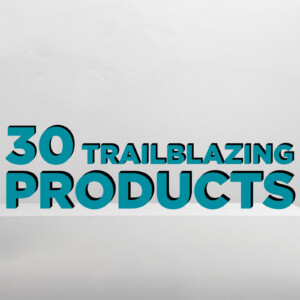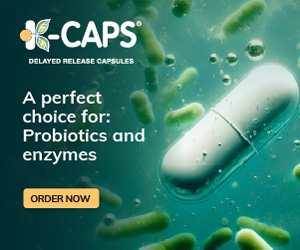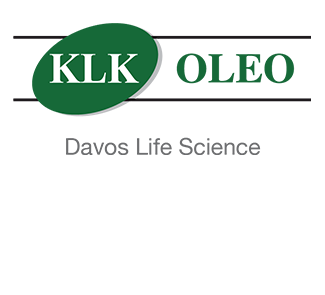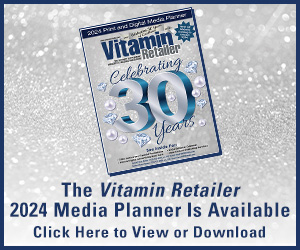Natural health and beauty aid (HBA) companies are seeking the best ways to keep their products “clean,” and convey that to consumers.
More than ever, buyers care not only about the ingredients inside their favorite products, but also about the impact manufacturing these products has on the environment.
When it comes to the cosmetics industry in particular, “natural” and “green” offer distinct marketing advantages.In fact, consumer demand for natural cosmetics products grew 13.9 percent in 2011 alone, according to research firm Kline & Company.Although it’s difficult to find a single definition, “natural” typically refers to the source of the raw materials, while “green” refers to the process used to convert starting materials into a finished ingredient.
Another term now used by food manufacturers and marketers, “clean label,” has increased its frequency in product development conversations. Although not intended to be used in marketing messages, “clean” represents a constellation of attributes.
Attorney Ivan J. Wasserman, a partner with Washington, D.C.-based Manatt Phelps Phillips LLC, said there is no legal definition of “clean label,” and the term does not even have a universally accepted definition in the industry or among consumers. “I like to think of it as generally meaning a product that only contains ingredients that are easily recognized by consumers … While ‘clean’ is not synonymous with ‘natural,’ I think they are related.”
Natural cosmetic and beauty aid companies also define their products as “clean.” Vice President of Product Development and Innovation Sarah Eggenberger, with Colorado-based MyChelle Dermaceuticals, said the company defines “clean” as using natural ingredients that have been sourced using safe manufacturing practices and not using toxic ingredients. “We have complete transparency in our ingredient declarations on our labels. And we never use toxic ingredients, such as parabens, phthalates, petrochemicals, synthetic colors and synthetic fragrance,” she said. “We list our ingredients in accordance to INCI (International Nomenclature of Cosmetic Ingredients) standards, which requires full disclosure of all ingredients in a consistent format.On our information sheets, we also list the common name and source of the ingredient to provide the consumer with all the necessary information.”
To consumers, “clean label” means both as few ingredients as possible and as natural as possible, said Kim Wells, personal care brand manager with Illinois-based NOW Solutions. “Many personal care products that consumers want [must] have a number of ingredients because they’re needed to perform the functions that consumers seek,” she said. “A ‘clean label’ to us means that you don’t exclude ingredients to look more natural or change the name of an ingredient to make it appear natural when it’s not, or to confuse or mislead the consumer. We make sure we are putting accurate information on the labels so our consumers are aware of what they are purchasing.”
According to Larry Plesent, CEO of Vermont-based Vermont Soap, the company manufactures some of the cleanest products in the industry. “Most of our bath, anti-aging and cleaning products are USDA (U.S. Department of Agriculture) Certified Organic. This is our clean label claim. USDA Organic means audited natural.From farm to finished goods, every step is audited to ensure a strict standard of natural. This is by far the strongest clean label nationally and internationally.”
High Demand
In 2011, the natural products industry was $37 billion strong growing at nine percent, and 2012 finished off with the same growth. “The skincare category is growing at 10 percent with roughly $95 million in sales. We believe the consumer is looking for cleaner skincare and gravitating from mass products to natural,” Eggenberger reported.
“One of the main concerns for consumers in relation to skincare is efficacy,” she added. To that end, MyChelle has developed the VISIA Program to prove to consumers that natural skincare products can be effective. The company believes that this program (www.mychelle.com/buzz/VISIA-complexion- analysis) will help the consumer trust they can make the change from mass to natural and help the category grow overall.
“HBA will always be a growing segment,” added Wells. “Customers in our industry are reading labels and asking questions, and they want to know what they are using. The natural personal care industry is continuing on an upward growth trend; you can even see the impact in the mass market side with more marketing towards natural products.”
Keeping Up With Consumers
The demand is there and growing, Plesent agreed, but expressed that is not the core issue. “The issue is determining what ‘clean’ and ‘green’ actually means,” he said. “Other than that, all you have is another fruity scented foaming liquid with greenish-slanted marketing.”
Manufacturers say ingredient transparency is the solution for companies seeking approval from concerned consumers. “I think customers are flexible with ingredients when companies are honest about why they are being used and where they come from,” explained Wells.”Keeping the consumer informed is key, making sure they have access to information on ingredients, like online ingredients guides, is helpful in answering many of their questions.”
Eggenberger added that consumers are incredibly savvy and well-read about health and skincare. She describes them as “label shoppers”—something her company has labored to find out firsthand.”We have many positive conversations with our consumer about the ingredients we use and why. So we feel we have a strong pulse on their needs and always use their recommendations as our benchmark in creating products,” she said. “I feel our viewpoint on clean ingredients is in alignment with the consumers’.They want to use naturally sourced ingredients, with none of the nasty stuff.”
Eggenberger said there are three key ingredients (aka, the nasty stuff) MyChelle’s consumers shun:
• Parabens: A group of chemical ingredients that are widely used as preservatives in skin care, parabens have been linked to possible carcinogenicity, as Iwell as an estrogenic effect from being exposed to the continued use of parabens as preservatives.
• Phthalates: A truly toxic skincare ingredient, according to Eggenberger, phthalates help products absorb into the skin. The Department of Health and Human Services has classified phthalates as a potential carcinogen.
• Petrochemicals: These are synthetic substances—petroleum (chemical) based. Studies have found that oral and topical application of petrochemicals resulted in anemia, kidney degeneration and nerve damage to the brain and spinal cord.
As for NOW, Wells said the questions the company receives on ingredients of concern usually pertain to parabens and phtalates as well as sodium lauryl sulfate (SLS), propylene glycol and synthetic fragrances.
At Vermont Soap, what consumers avoid “is all over the place,” according to Plesent. But, he added, “We see people running from scents and from SLS.”
Cleaning Up Labels
Reading most cosmetic ingredient lists can trigger a deep desire for a degree in chemistry. Plesent pointed out that an influx of “almost green” HBA products are mostly hiding behind non-SLS detergent formulas. “Not much actually changes when a company markets that they are now ‘green,'” he said.
“We can only speak for MyChelle’s steps toward full disclosure, which is providing as much information as possible to the consumer without being overwhelming,” Eggenberger said. “We do that through our ingredient listing, but also through our product information sheets that detail the ingredient’s Latin name, common name and source.”
While Mychelle openly promotes its ingredient lists, Eggenberger said the company believes this should just be the standard versus an anomaly. “We talk about how we list our ingredients on our website and through our marketing literature.”
So how should manufacturers make a clear marketing message? According to Plesant, “The usual ways. Showing a clear, water-like product is one place to start.”
“We believe if we continue to educate and have transparency in our formulations, the consumer will be able to understand the benefits and weed through bad information,” Eggenberger added. “For instance, there is a perception that if you see a long, unpronounceable word, it seems it is toxic.But we reassure the consumer it is not [a toxic ingredient] by listing the source to clarify any confusion … We do not want to compromise our skin to bad marketing propaganda.”
Passing Retailer Muster
At Choices Natural Market in Venice, FL, Sales Associate Jennifer explained that a lot of HBA companies have con- • tacted the store since its opening two years ago. “We have them e-mail us and we’ll look at their ingredient list to see if they’re organic and how their products are processed.” Once the company passes the store’s requirements, it is asked to provide product samples, which are given to customers to see how well they’re received. So far, the product lineup includes Weleda, Aubrey and Dr. Bronner’s, among others.”Dr. Bronner’s is one of the cleanest soaps out there,” she explained.
The store also sells MyChelle facial products. “Customers really love it. It flies off the shelf,” Jennifer said. Being located in Southern Florida, it should probably come as no surprise that the store’s topselling MyChelle product is Sun Shield Unscented.Along with being unscented, it offers full spectrum UVA/UVB sun defense, and the translucent zinc and titanium dioxides provide an alternative to harsh chemical sunscreens.
Clean HBA Trends
When looking for the products to be trusted, many people are wising up to the disingenuousness of branding, noted Plesent. “They are looking for a good honest deal and do not mind buying in bulk to get it. Vermont Soap customers are fiercely loyal and look forward to our new product releases every six months or so.”
As for the hottest ingredients in natural skincare, plant stem cells are definitely the flavor of the year. “They are over-achieving ingredients that visibly impart change on the skin and have a strong sustainability story,” noted Eggenberger, adding that plant stem cells use the heart of the plant, providing the highest potency. MyChelle uses four plant stem cells, including a new innovation, Buddleja Plant Stem Cell, in the company’s Perfect C Serum.
Buddleja plant stem is a shrub of the Scrophulariaceae family, which is native to Eastern Asia that takes a three-level comprehensive approach against photo-aging, has a high antioxidant activity level, strong anti-inflammatory response and inhibits collagenase, according to the company.
While consumers are concerned with ingredient safety, Eggenberger agreed with Plesent that they are also looking for what’s new. “We live in a visual age, so skincare will continue to progress down a vigorous road of innovation and high standards,” she concluded. “I believe beyond results-driven ingredients, shoppers are going to look into different segments for skincare answers.
We are seeing a merge of dermatological ingredients in the natural grocery market and holistic options at plastic surgery offices. The synergy will lead to a comprehensive approach to skincare concerns and overall health.”
Cosmetic Safety Watch
Some mainstream cosmetic products pose safety concerns, said the Environmental Working Group. The organization suggests consumers skip those likely to contain dangerous chemicals, such as:
• Hair straighteners
• Loose powders
• Perfumes
• Dark permanent hair dyes
• Skin lighteners
• Products with “fragrance” listed as an ingredient
Some of the harmful contaminants the organization warns consumers should avoid include:
• DMDM hydantoin
• Ceteareth
• Diazolidinyl urea
• Polyethylene glycol
• Imidazolidinyl urea
• PEG
For More Information:
MyChelle Dermaceuticals,
(800) 447-2076
NOW Solutions,
(888) 669-3663
Vermont Soap,
(802) 388-4302
